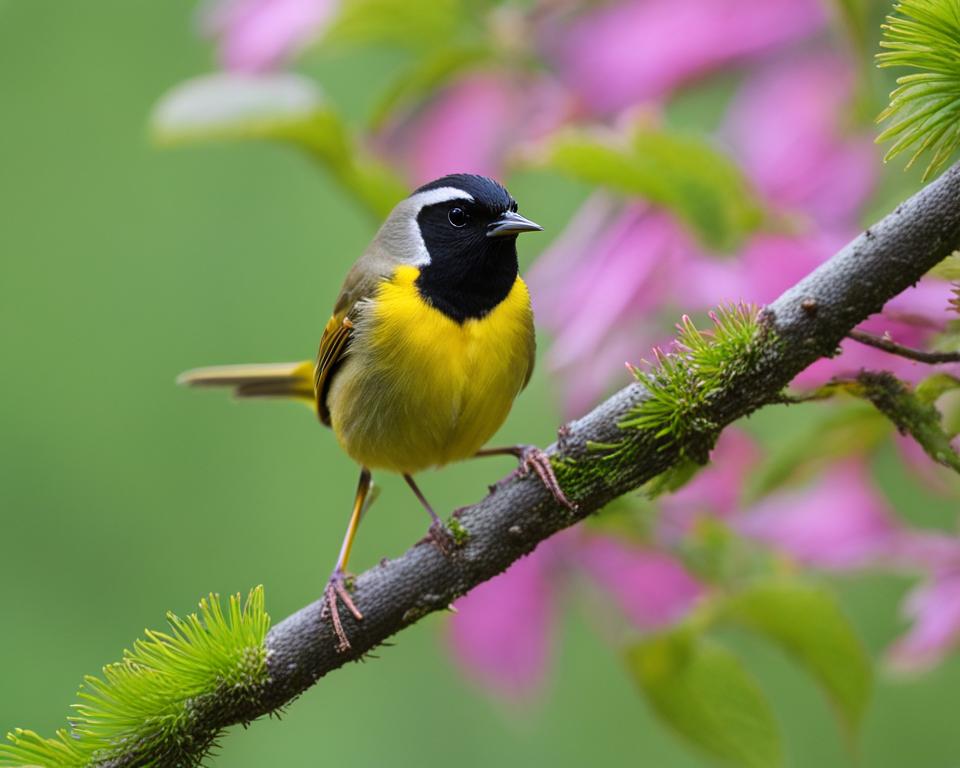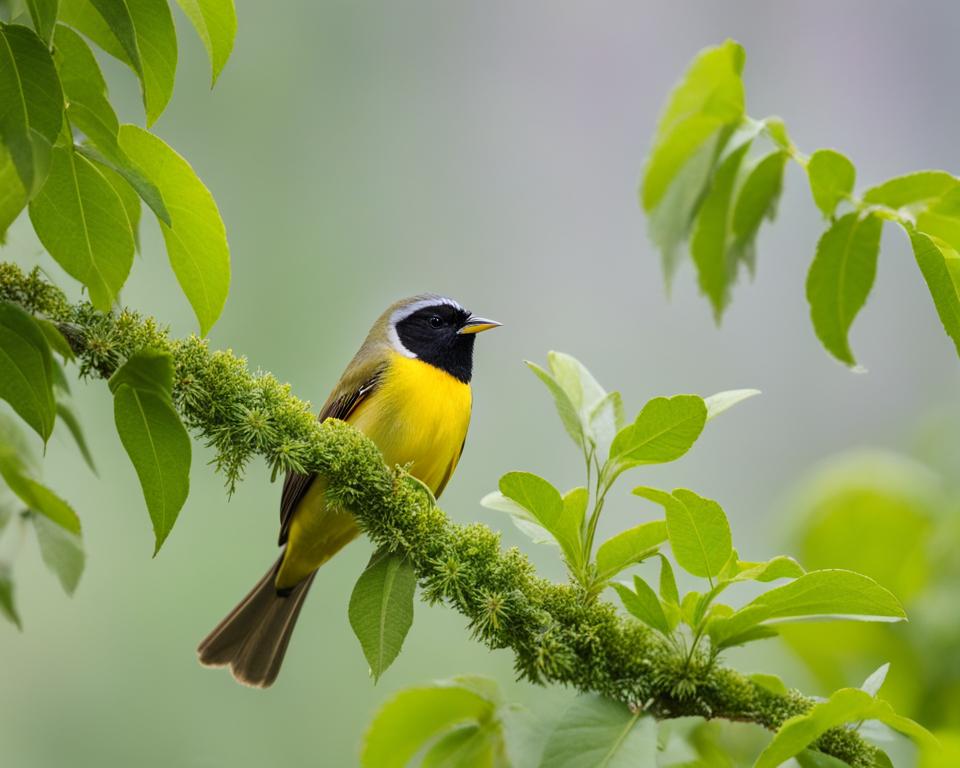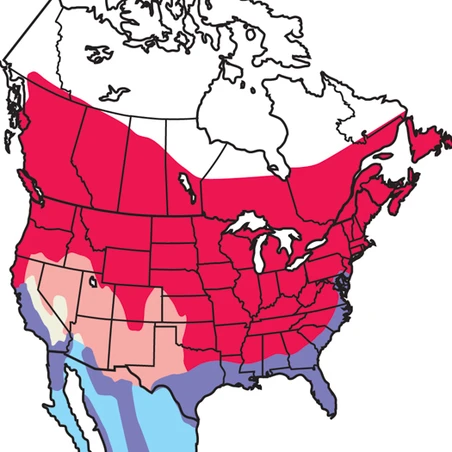
Birding Cades Cove: Spotting the Vibrant Common Yellowthroat on the Scenic Loop Road
Are you a wildlife photography enthusiast? If so, you won’t want to miss the opportunity to bird in Cades Cove, where you can spot the vibrant Common Yellowthroat along the stunning Scenic Loop Road. This popular destination offers a prime location for capturing these beautiful songbirds in their natural habitat.
The Common Yellowthroat is a small but captivating bird known for its round belly, long tail, and striking colors. Adult males boast a black mask and a vibrant yellow throat. Female Common Yellowthroats have a more subdued appearance with brownish feathers above, complemented by a yellow throat and breast. Immature males and females display unique markings that gradually transform as they mature.
These birds thrive in open areas with thick, low vegetation, ranging from marshes to grasslands to open pine forests. You can often find them skulking low to the ground in dense thickets and fields, making them a challenge to spot and photograph. However, the scenic loop road in Cades Cove provides a remarkable opportunity to observe and capture these elusive birds in action.
Whether you are a seasoned birder or a photography enthusiast, birding Cades Cove offers an immersive experience in nature. The scenic loop road, with its breathtaking views and diverse wildlife, is a must-visit destination for anyone interested in capturing the vibrant beauty of the Common Yellowthroat through their lens. So grab your camera and head out to Cades Cove to witness the stunning colors and behavior of these captivating songbirds.
Identification and Behavior of the Common Yellowthroat
The Common Yellowthroat is a small songbird with distinctive features that make it easy to identify. Its bright yellow coloration, black face mask (in males), and olive upperparts set it apart from other bird species. These small songbirds have chunky, rounded heads and medium-length, slightly rounded tails.

Common Yellowthroats spend most of their time foraging for small insects and spiders in dense thickets and fields. Their preferred habitat consists of open areas with thick, low vegetation, such as marshes, wet thickets, edges, and brushy fields. They are often found skulking low to the ground, making them a delight for birding and wildlife photography enthusiasts.
Distinct Behavior
Males of the Common Yellowthroat species have a distinct song that consists of a rolling “wichety-wichety-wichety” sound. It is their way of attracting mates and defending their territories from other males. In addition to their melodious song, both males and females give a full-sounding chuck note.
“The Common Yellowthroat’s song is one of the delightful sounds you can experience while birding in Cades Cove.” – Birdwatcher Magazine
During migration, Common Yellowthroats can often be found in fields and edges, sometimes joining other warbler species in mixed foraging flocks. This behavior allows them to adapt to different environments and thrive in various ecosystems.
A Visual Guide to Common Yellowthroat Identification
| Physical Features | Males | Females |
|---|---|---|
| Coloration | Bright yellow with black face mask | Brownish above with a yellow throat and breast |
| Undertail Coverts | Yellow | Yellow |
| Immature Males | Faint and patchy black mask | Pale brownish overall with yellow undertail coverts |
The Common Yellowthroat’s vibrant coloration, unique markings, and distinctive behaviors make it a favorite among birding enthusiasts. When exploring Cades Cove, keep an eye out for these beautiful songbirds and capture their lively presence in your wildlife photography.
Habitat and Distribution of the Common Yellowthroat
The Common Yellowthroat, a vibrant songbird, can be found in various habitats across North America. These birds are commonly spotted in open areas with thick, low vegetation, including marshes, wet thickets, edges, and brushy fields.
They have a preference for breeding in marshes and other very wet habitats with dense low growth, where they can find ample resources and suitable nesting sites. However, during migration and winter, they can also be found in any kind of brushy or wooded area.
Being widespread, the distribution of the Common Yellowthroat spans from coast to coast in North America. Let’s take a closer look at the specific habitats and regions where these beautiful birds can be found.
Habitat Preferences
The Common Yellowthroat is most abundant in marshes, where its secretive nature and preferred low-lying vegetation offer excellent cover for nesting and foraging. Marshes provide a rich source of insects and vegetation that satisfy the dietary needs of these small birds. The dense growth in marshes, consisting of cattails, reeds, and other wetland plants, offers protection from predators and a suitable environment for successful breeding.
Aside from marshes, Common Yellowthroats can also be found in other wet thickets, edges, and brushy fields. These areas with thick, low vegetation provide ideal locations for these birds to forage and nest. Their ability to adapt to different habitats allows them to thrive in diverse ecosystems across North America.
Distribution
The Common Yellowthroat has a wide distribution, ranging from coast to coast in North America. They can be found throughout the United States and Canada, with their range extending from the East Coast to the West Coast and from the northern regions to the southernmost parts of their range.
While the Common Yellowthroat is most commonly associated with marshes, their adaptability allows them to inhabit various habitats during migration and winter. This includes areas such as forest edges, shrubby fields, and even residential gardens and parks.
To get an idea of the Common Yellowthroat’s distribution, refer to the map below:
This map shows the range of the Common Yellowthroat in North America, highlighting the different regions where these birds can be found. From the dense marshes along the East Coast to the vast landscapes of the West Coast, the Common Yellowthroat brings its vibrant presence to various habitats, captivating birding enthusiasts and wildlife photographers.
Conservation and Interesting Facts about the Common Yellowthroat
The Common Yellowthroat, known for its vibrant appearance and distinctive sound, has faced declines in several regions due to the draining of marshes. Despite this, it remains widespread and is still considered a common sight in many areas.
What sets the Common Yellowthroat apart from other warblers is its unique nesting behavior. While most warblers prefer wooded areas, these non-conformist birds choose to nest in open marshes, showcasing their adaptability.
One interesting fact about the Common Yellowthroat is its vocal nature. With distinctive songs and call notes, they make their presence known in their preferred habitats. These calls not only add to the charm of birding in Cades Cove but also make it easier to spot these beautiful birds.
The Common Yellowthroat’s nesting habits have also led to an intriguing dynamic. These birds often experience brood parasitism, where Brown-headed Cowbirds lay their eggs in their nests. However, the Common Yellowthroat has evolved defenses against this intrusion. They may desert nests with cowbird eggs or even build multiple nests on top of parasitized ones, showcasing their determination to protect their own young.
Remarkably, the oldest recorded Common Yellowthroat lived for at least 11 years and 6 months, highlighting their resilience and longevity.
Source Links
- https://www.allaboutbirds.org/guide/Common_Yellowthroat/overview
- https://www.audubon.org/field-guide/bird/common-yellowthroat
- https://www.allaboutbirds.org/guide/Common_Yellowthroat/id
